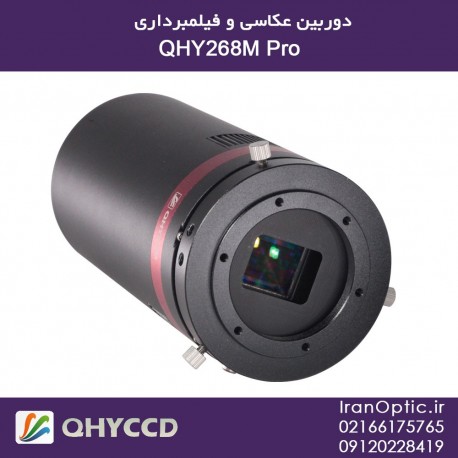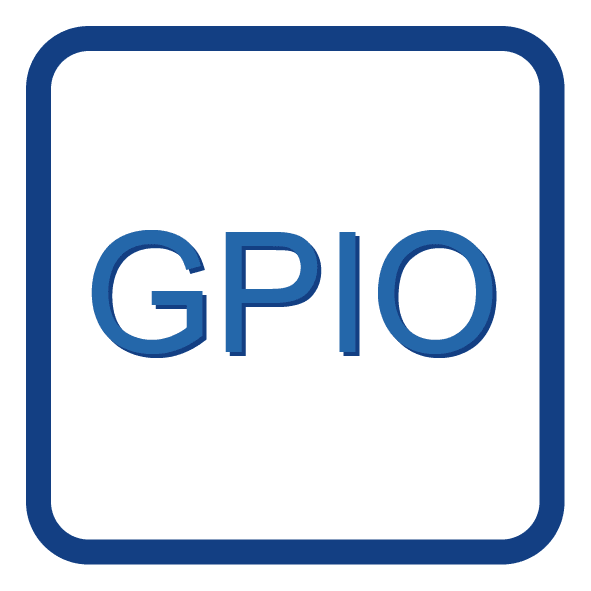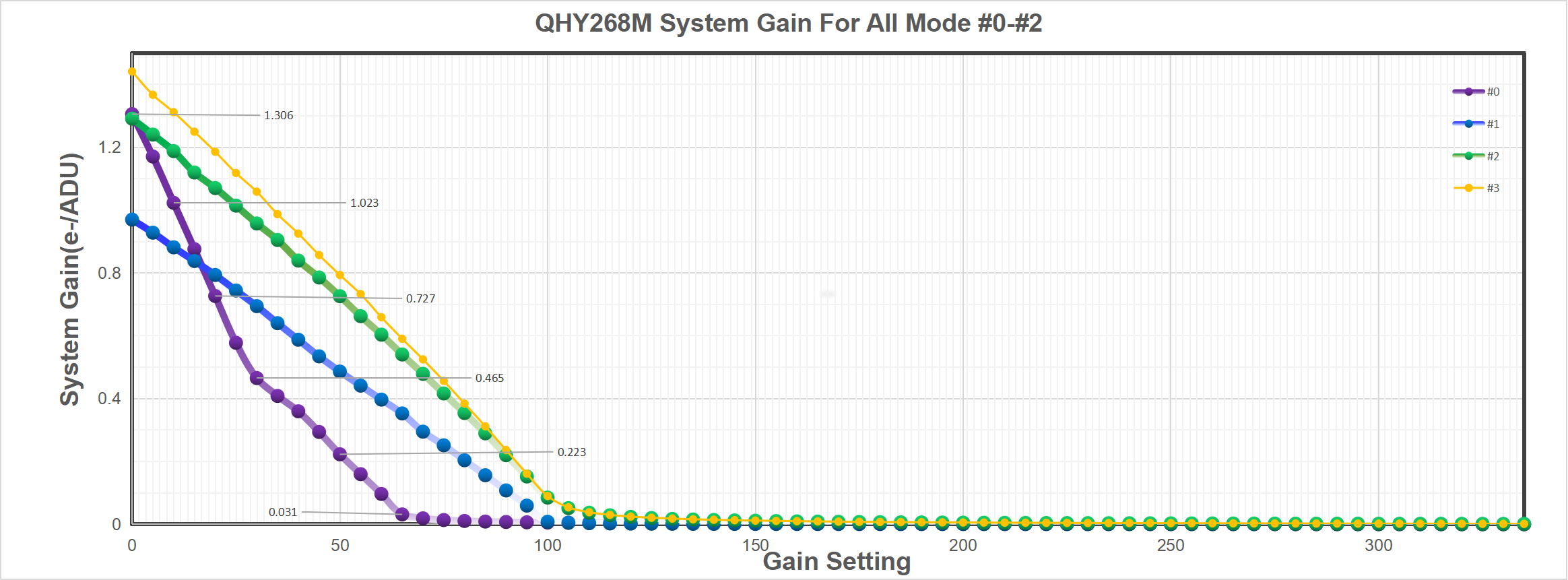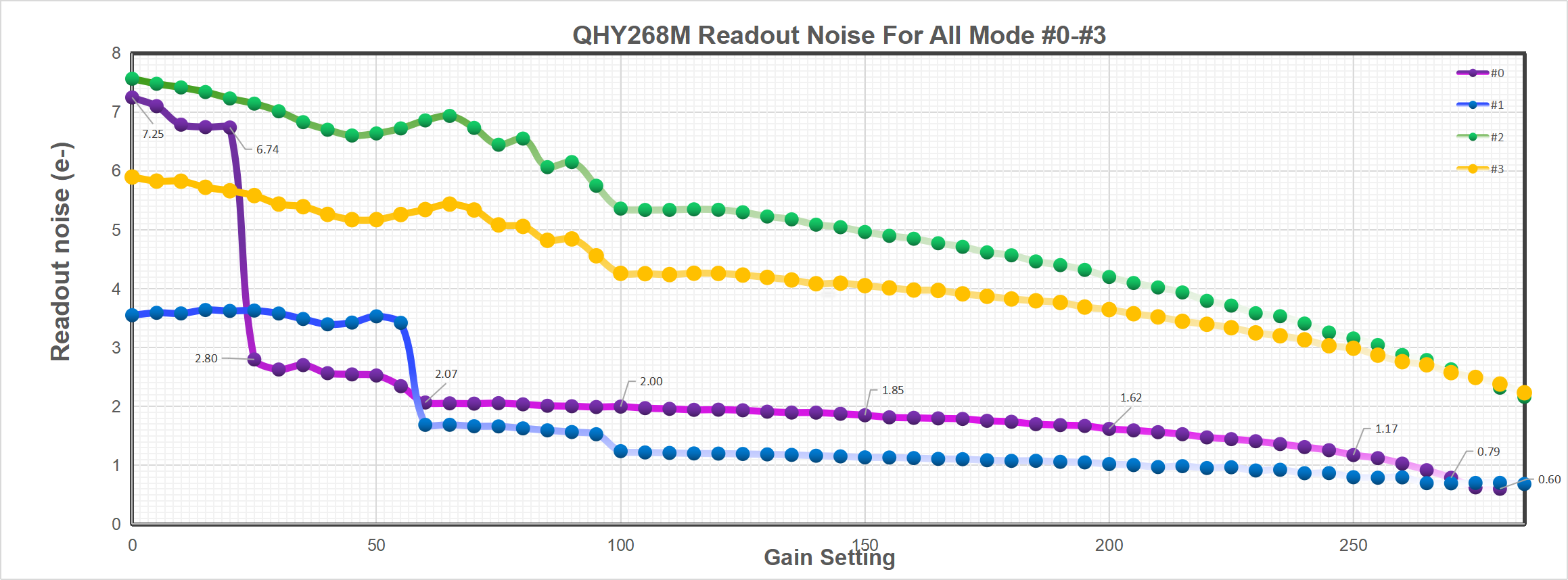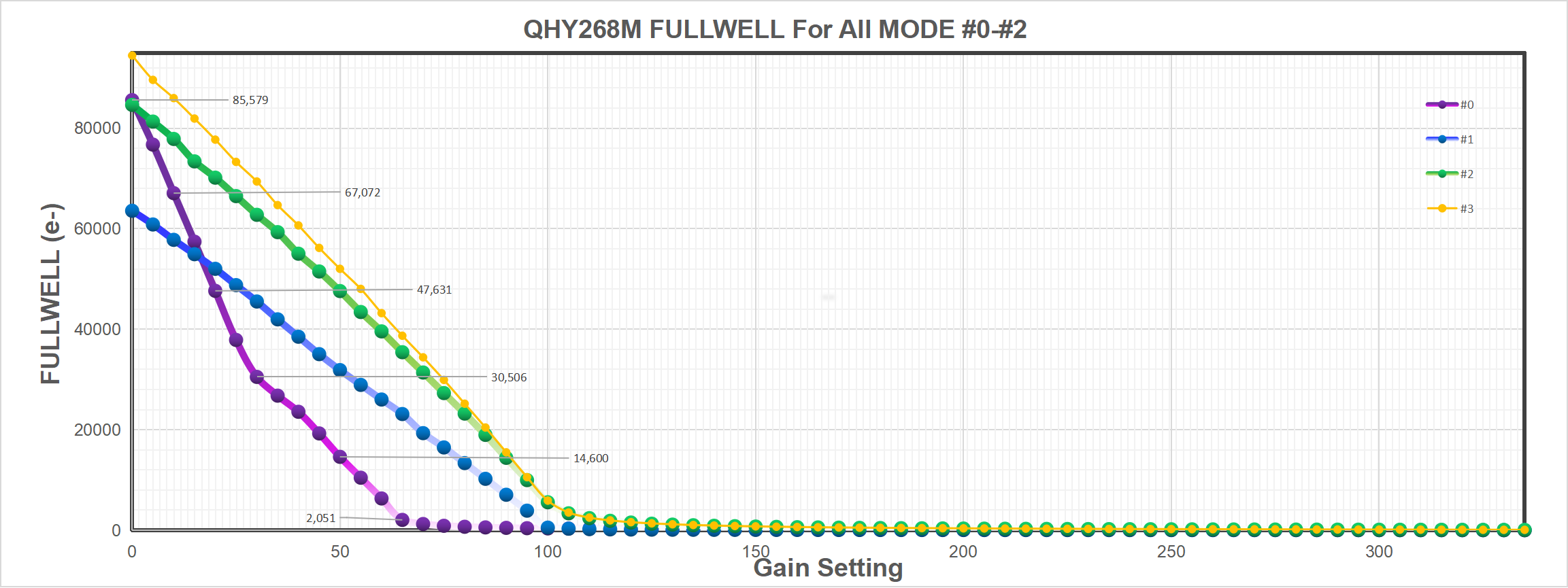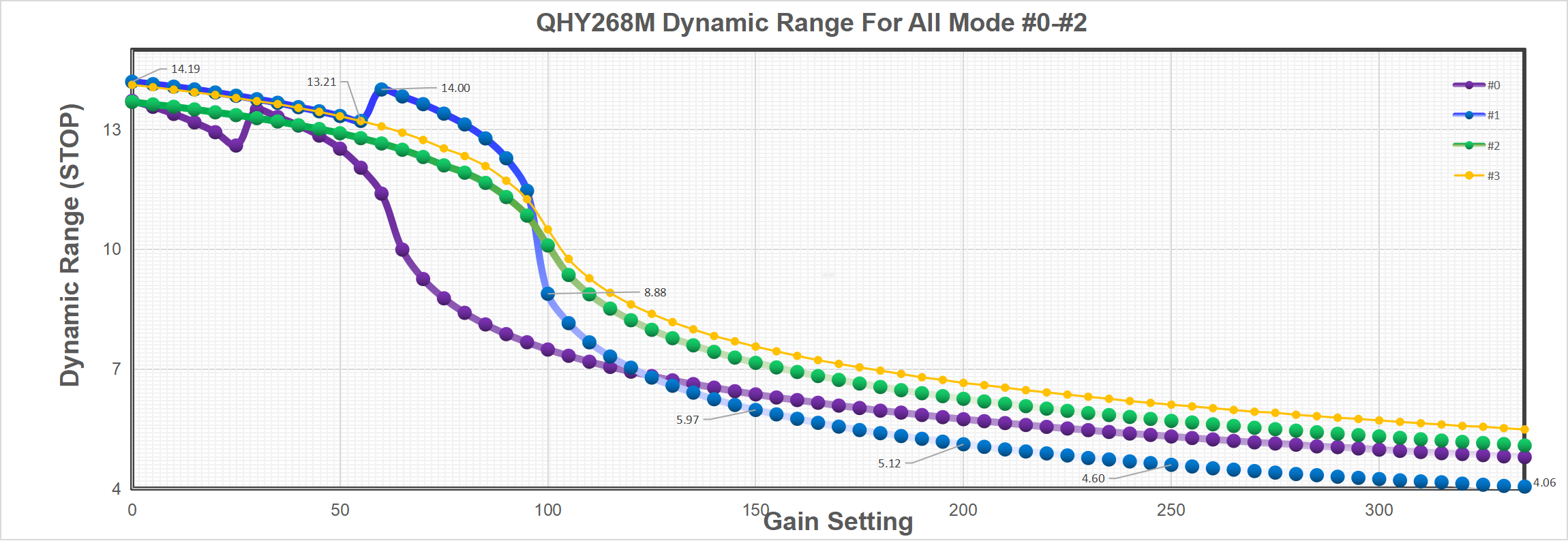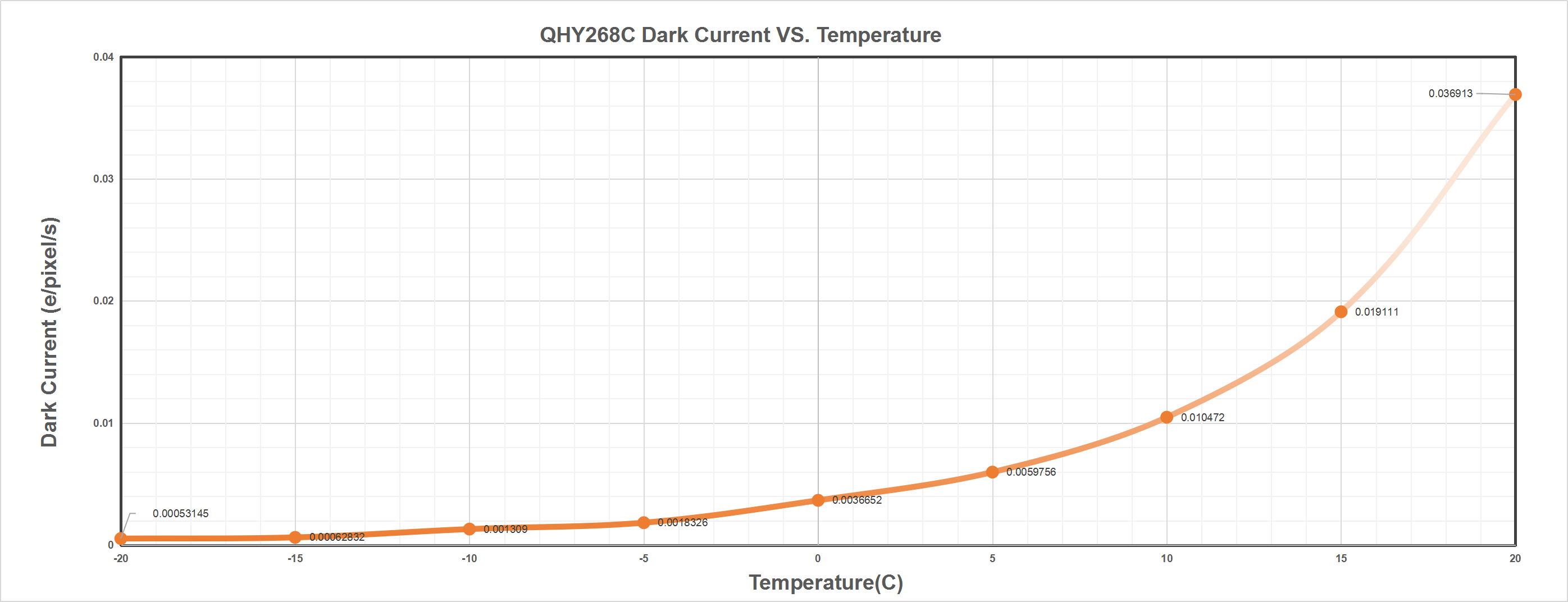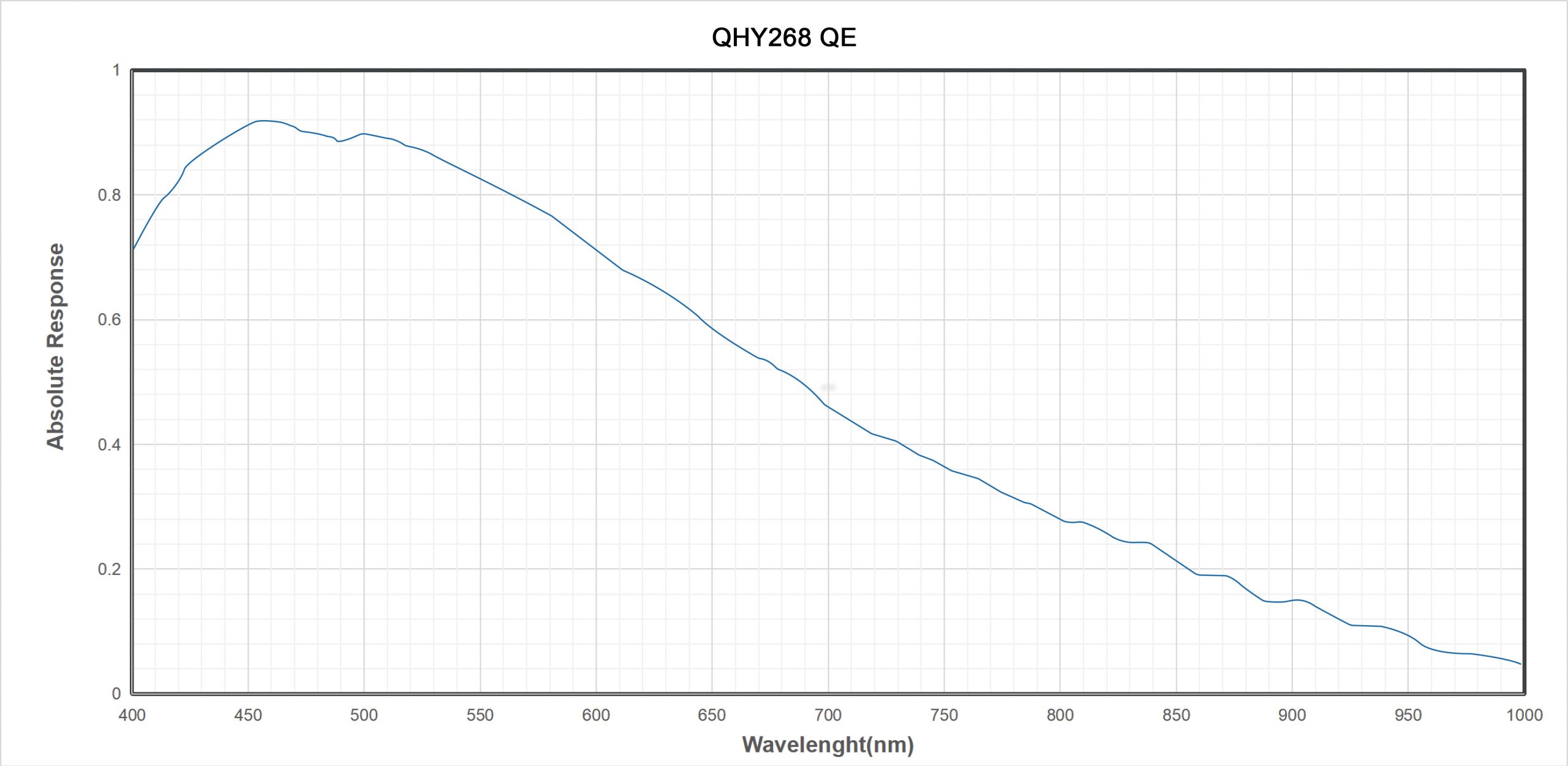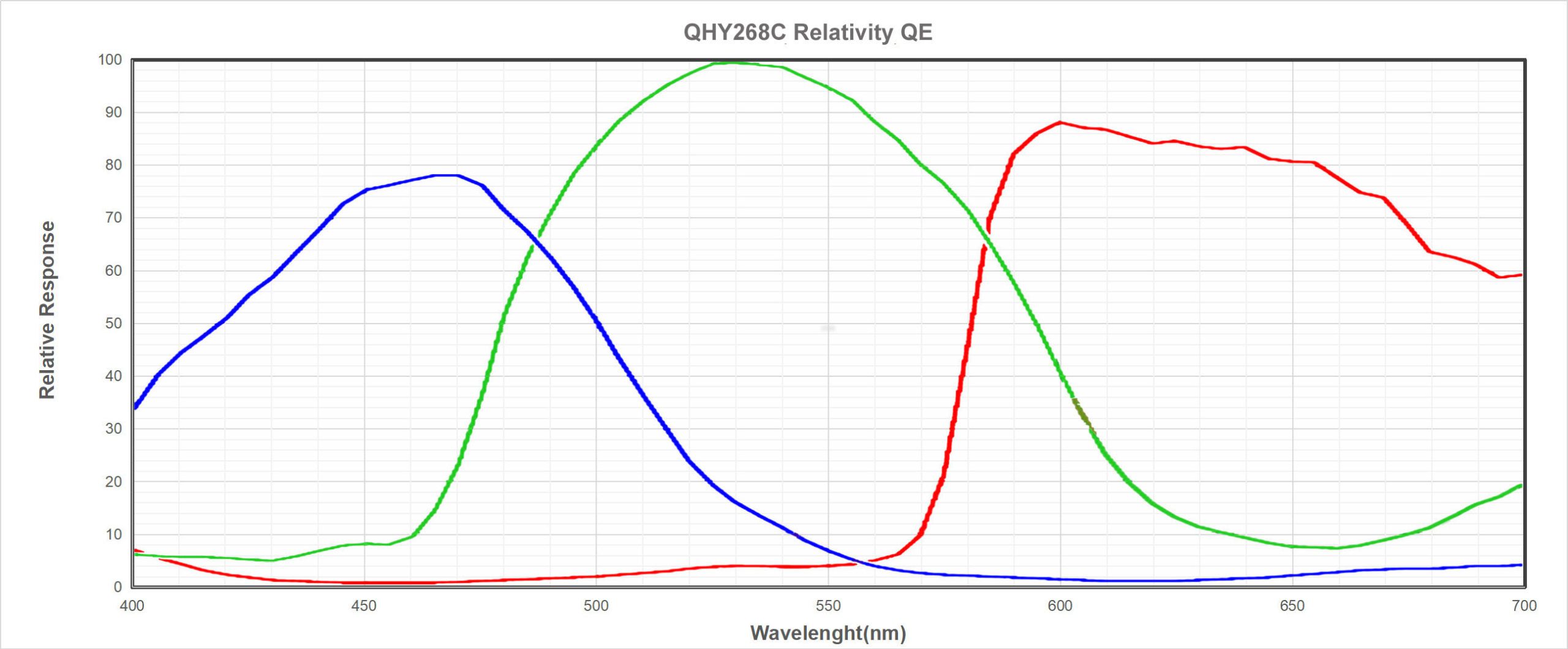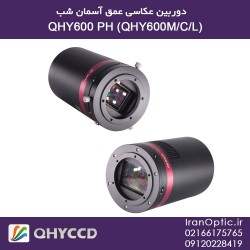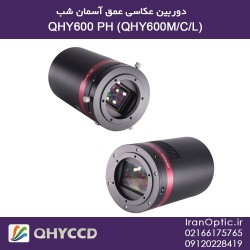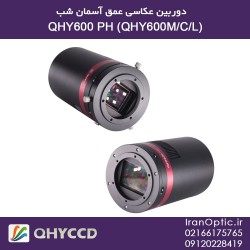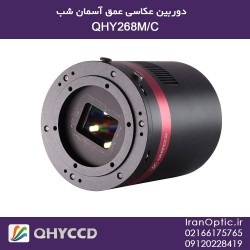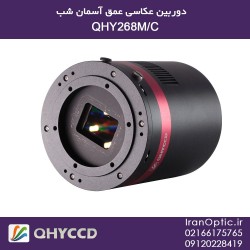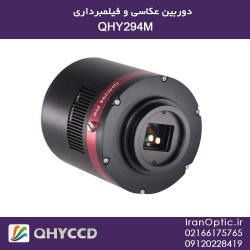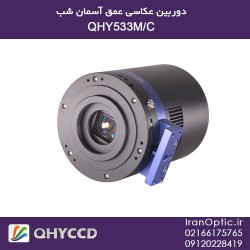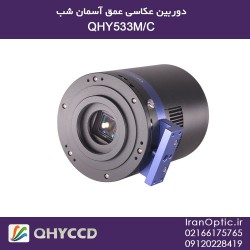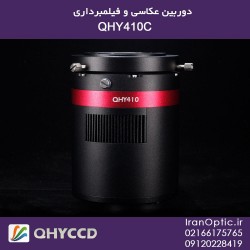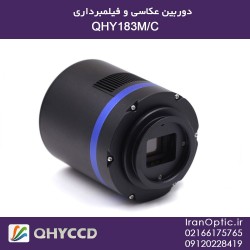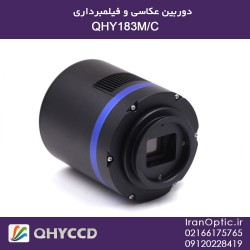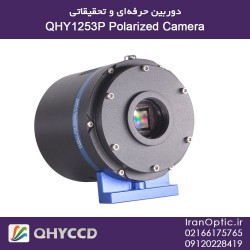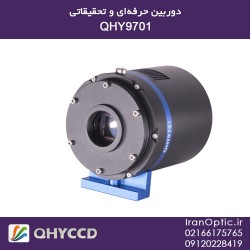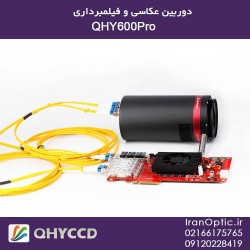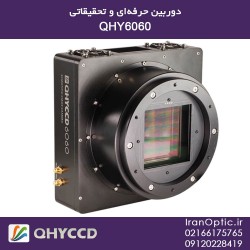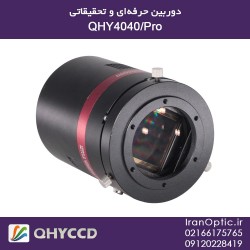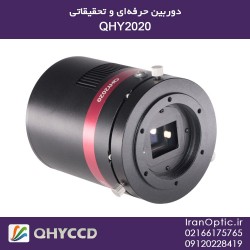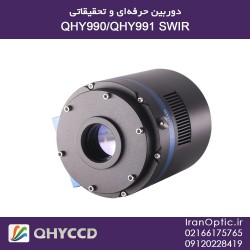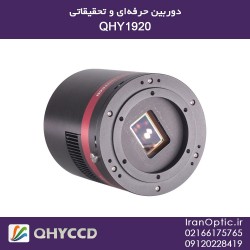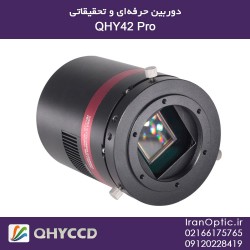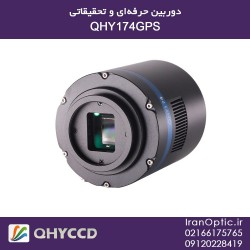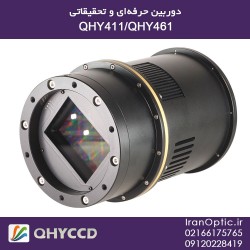فروشگاه تلسکوپ، دوربین عکاسی، ابزارهای رصدی، آسمان نما، رصدخانه، مناسب دانشآموزان و دانشجویان، بهترین قیمتها، ارزان و حرفهای، به همراه مشاوره و راهنمایی پیش و پس از خرید.

هیچ محصولی وجود ندارد
فقط آنلاین
QHY268M Pro
محصول جدید
No reward points for this product.
- Remove this product from my favorite's list.
- Add this product to my list of favorites.
- ارسال به یک دوست
- چاپ
مشخصات
| سیستم خنک کننده ( COOLED ) | دارد |
| رنگ سنسور (رنگی/سیاه سفید) | سیاه و سفید |
| سرعت خروجی درگاه | USB 3.0 Camera |
| نوع سنسور | CMOS |
اطلاعات بیشتر
QHY268 Pro M has SONY IMX571 APS-C format CMOS sensor inside. 26mega pixels, Back-illuminated, native 16BIT ADC. QE is up to 91% and readout noise is as low as 1.1e Even with a 3.76um pixel size, it has a big full-well up to 75ke. It has extremely low thermal noise 0.0005e/pixel/sec @ -20C, ZERO amplifier-glow performance, It has a maximum frame rate of 6.8FPS@16bit full resolution.
QHY268PRO-M has only monochrome version. QHYCCD also supplies its liquid-cooling version, which is a customized type and needs to be pre-ordered).
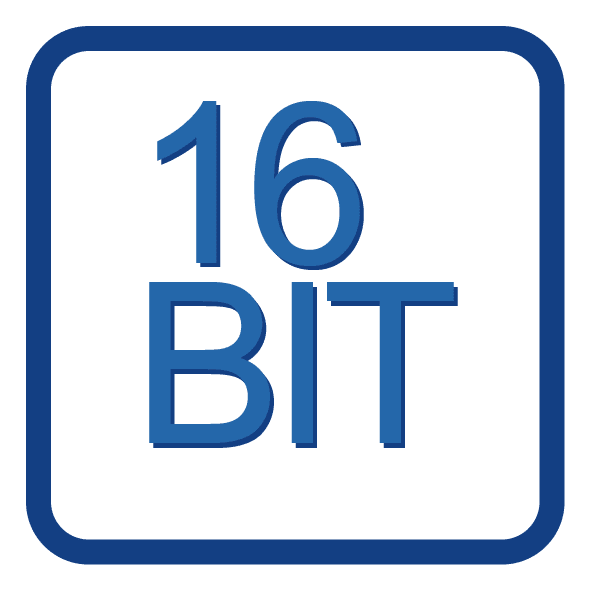 Native 16 bit A/D: The new Sony sensor has native 16-bit A/D on-chip. The output is real 16-bits with 65536 levels. Compared to 12-bit and 14-bit A/D, a 16-bit A/D yields higher sample resolution and the system gain will be less than 1e-/ADU with no sample error noise and very low read noise.
Native 16 bit A/D: The new Sony sensor has native 16-bit A/D on-chip. The output is real 16-bits with 65536 levels. Compared to 12-bit and 14-bit A/D, a 16-bit A/D yields higher sample resolution and the system gain will be less than 1e-/ADU with no sample error noise and very low read noise.
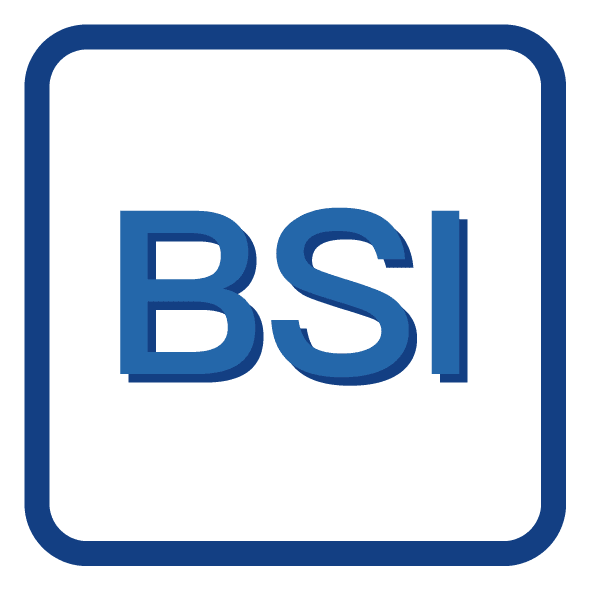 BSI: One benefit of the back-illuminated CMOS structure is improved full well capacity. This is particularly helpful for sensors with small pixels. In a typical front-illuminated sensor, photons from the target entering the photosensitive layer of the sensor must first pass through the metal wiring that is embedded just above the photosensitive layer. The wiring structure reflects some of the photons and reduces the efficiency of the sensor. In the back- illuminated sensor the light is allowed to enter the photosensitive surface from the reverse side. In this case the sensor’s embedded wiring structure is below the photosensitive layer. As a result, more incoming photons strike the photosensitive layer and more electrons are generated and captured in the pixel well. This ratio of photon to electron production is called quantum efficiency. The higher the quantum efficiency the more efficient the sensor is at converting photons to electrons and hence the more sensitive the sensor is to capturing an image of something dim.
BSI: One benefit of the back-illuminated CMOS structure is improved full well capacity. This is particularly helpful for sensors with small pixels. In a typical front-illuminated sensor, photons from the target entering the photosensitive layer of the sensor must first pass through the metal wiring that is embedded just above the photosensitive layer. The wiring structure reflects some of the photons and reduces the efficiency of the sensor. In the back- illuminated sensor the light is allowed to enter the photosensitive surface from the reverse side. In this case the sensor’s embedded wiring structure is below the photosensitive layer. As a result, more incoming photons strike the photosensitive layer and more electrons are generated and captured in the pixel well. This ratio of photon to electron production is called quantum efficiency. The higher the quantum efficiency the more efficient the sensor is at converting photons to electrons and hence the more sensitive the sensor is to capturing an image of something dim.
 Zero Amplify Glow: This is also a zero amplifer glow camera.
Zero Amplify Glow: This is also a zero amplifer glow camera.
 TRUE RAW Data: In the DSLR implementation there is a RAW image output, but typically it is not completely RAW. Some evidence of noise reduction and hot pixel removal is still visible on close inspection. This can have a negative effect on the image for astronomy such as the “star eater” effect. However, QHY Cameras offer TRUE RAW IMAGE OUTPUT and produces an image comprised of the original signal only, thereby maintaining the maximum flexibility for post-acquisition astronomical image processing programs and other scientific imaging applications.
TRUE RAW Data: In the DSLR implementation there is a RAW image output, but typically it is not completely RAW. Some evidence of noise reduction and hot pixel removal is still visible on close inspection. This can have a negative effect on the image for astronomy such as the “star eater” effect. However, QHY Cameras offer TRUE RAW IMAGE OUTPUT and produces an image comprised of the original signal only, thereby maintaining the maximum flexibility for post-acquisition astronomical image processing programs and other scientific imaging applications.
 Anti-Dew Technology: Based on almost 20-year cooled camera design experience, The QHY cooled camera has implemented the fully dew control solutions. The optic window has built-in dew heater and the chamber is protected from internal humidity condensation. An electric heating board for the chamber window can prevent the formation of dew and the sensor itself is kept dry with our silicon gel tube socket design for control of humidity within the sensor chamber.
Anti-Dew Technology: Based on almost 20-year cooled camera design experience, The QHY cooled camera has implemented the fully dew control solutions. The optic window has built-in dew heater and the chamber is protected from internal humidity condensation. An electric heating board for the chamber window can prevent the formation of dew and the sensor itself is kept dry with our silicon gel tube socket design for control of humidity within the sensor chamber.
 Cooling: In addition to dual stage TE cooling, QHYCCD implements proprietary technology in hardware to control the dark current noise.
Cooling: In addition to dual stage TE cooling, QHYCCD implements proprietary technology in hardware to control the dark current noise.
 The product has a built-in 2*10Gbps fiber socket. It can work with the QHYCCD PCIE2.0x8 data grabber card. The fiber interface is for the requirement of the professional obs. It will give the following advantages than the USB3.0 interface. Then what is the benefit of the Fiber Interface?
The product has a built-in 2*10Gbps fiber socket. It can work with the QHYCCD PCIE2.0x8 data grabber card. The fiber interface is for the requirement of the professional obs. It will give the following advantages than the USB3.0 interface. Then what is the benefit of the Fiber Interface?
- Higher data rate. One 10Gigabit Fiber can transfer maximum 10Gbps data. The actual data rate can get about 800MBytes/s. While the USB3.0 is 5Gbps and the actual data rate is about 350MByte/sec. Use the two 10Gigabit fiber can get about 1.6GBytes/s speed. The IMX455 sensor has the high-speed mode like the 10FPS 14bit full resolution mode and 30FPS 8K VIDEO mode. The data rate of these modes is much more than USB3.0.
- Very long transfer distance. The fiber is hundreds of times longer than USB3.0. USB3.0 can only transfer 3meter to 5meter. For longer distances, it needs the extender cable but can just get 10meter to 15meter. While the Fiber can transfer 300meter directly by default optic module; with the long-distance optic module, it can transfer up to 40km.
- Solid stable and no affected by EMI. One major factor that causes the camera to hang is the EMI issue. The USB3.0 transfer maybe gets effect by the EMI in the transfer patch. Like the static and other high-power device emitted. The EMI will cause the transfer data packet to get a CRC error and cause the image loss. A long USB cable is easier to get this problem. Light can not be affected by the EMI. So with the fiber transfer, it will get everything very stable.
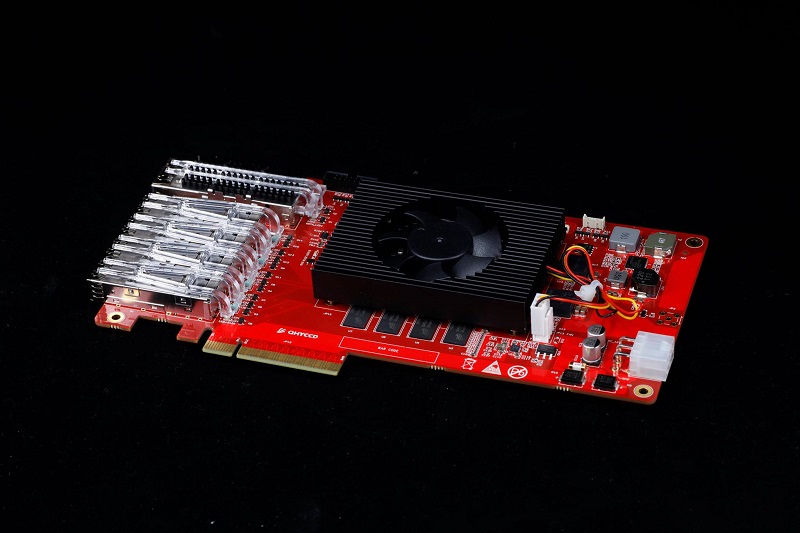
| Model | QHY268PRO M |
| COMS Sensor | SONY IMX571 M |
| Mono/Color | Mono Only |
| FSI/BSI | BSI |
| Pixel Size | 3.76um x 3.76um |
| Effective Pixel Area | 6280*4210 (includes the optically black area and overscan area) |
| Effective Pixels | 26MP |
| Sensor Size | APS-C |
| A/D Sample Depth | Native 16-bit (0-65535 greyscale) A/D |
| Full Well Capacity (1×1, 2×2, 3×3) | 51ke- 75ke- or above in extended full well mode |
| Full Frame Rate | USB3.0 Port: Full Resolution: 6.8FPS@8BIT 6FPS @16BIT 2048lines:13.6FPS@8BIT 11.5FPS@16BIT 1080lines:25.4FPS@8BIT 19.5FPS@16BIT 768lines:35FPS@8BIT 25FPS@16BIT 480lines:50FPS@8BIT 34FPS@16BIT |
| Readout Noise | 1.1e- High Gain, 3.5e- Low Gain (5.3e- to 7.4e- in extended full well mode) |
| Dark Current | -20C,0.0005e /pixel/sec -10C,0.001e /pixel/sec |
| Exposure Time Range | 30us-3600sec |
| Unity Gain* | 0*(PH Mode) 30(Extended Fullwell Mode) *With the improvement of the CMOS technology, the 16bit CMOS camera has been released, like QHY600/268/411/461. For these cameras, even in lowest gain it has beyond the requirement of unit gain (less than 1e/ADU due to sufficient samples) So you can directly set gain0 as start. Please note QHY600/268C/411/461 has extend full well mode. In this mode you still need to find out the unit gain position.
|
| Amp Control | Zero Amplifer Glow |
| Firmware/FPGA remote Upgrade | Fully support via Camera USB port |
| Shutter Type | Electronic Shutter |
| Computer Interface | USB3.0 and 2*10Gbps Fiber interface |
| Built-in Image Buffer | 2Gbyte DDR3 Memory |
| Cooling System | Two-stage TEC cooler Air Cooling Version Typical -30C below ambient in short exposure time (exposure time < 10sec) Typical -35C below ambient in long exposure time (exposure time > 30sec) (Test temperature +20°) Water Cooling Version Typical -45C below ambient in long exposure time (exposure time > 30sec) |
| Recommended flow rates for water-cooled versions | 1.6ml/s |
| Optic Window Type | AR+AR High Quality Multi-Layer Anti-Reflection Coating |
| Anti-Dew Heater | Yes |
| Humidity Sensor* | Yes |
| Telescope Interface | Support M54 and M48 (with standard adapters ) |
| Back Focal Length | QHY268M: 14.5mm* *If used with the QHY filter wheel, the actual “BFL Comsumed” is 12.5mm. Note 14.5mm rear intercept does not include adapter thread, which must be used with adapters if you need a M54 thread. |
Multiple Readout Modes is a new function for newer QHY Cameras. Different readout modes have different driver timing, etc., and result in different performance. The QHY268 currently has four readout modes, and more modes will be added in the future. These readout modes are currently supported in the QHY ASCOM Camera Driver, SharpCAP software and the N.I.N.A software.
Readout Mode #0 (Photographic Mode). In this mode there is a drop in the noise between Gain 25 and Gain 26. We recommend setting the Gain to 26 to begin. At this setting the full well is 27ke- and readout noise is 2.7e-. For every long exposures you can lower the gain from this point to increase the full well capacity.
Readout Mode #1 (High Gain Mode). Please note there is a HGC/LGC switch point at gain55 to gain56. Gain0-55 uses LGC and Gain55-100 uses HGC.
Readout Mode #2 (Extended Fullwell Mode).
Now QHY268 adds #3 mode Extend Fullwell 2CMSIT (yellow curve). The advantage of this mode is that it has the same full well value and system gain as the #2 mode Extend Fullwell, but the read noise is reduced by about 1.3 times.
This function needs to be used with 2020.6.26 or newer SDK. If your software cannot display this mode, please download the QHYAllInOne installation package to update the SDK in the software.
Monochrom’s Spectrum Response Curve. The curve is based on SONY’s datasheet. In the datasheet, it is the normalized curve QHYCCD test it by comparing with an known QE CCD sensor. And get this curve. This curve is only a reference. QHYCCD does not guarantee this curve is correct.
مشخصات
Reviews
مشخصات فنی CCD و CMOS | |
| نوع سنسور | CMOS |
| رنگ سنسور (رنگی/سیاه سفید) | سیاه و سفید |
| سیستم خنک کننده ( COOLED ) | دارد |
| سرعت خروجی درگاه | USB 3.0 Camera |
No customer reviews for the moment.


